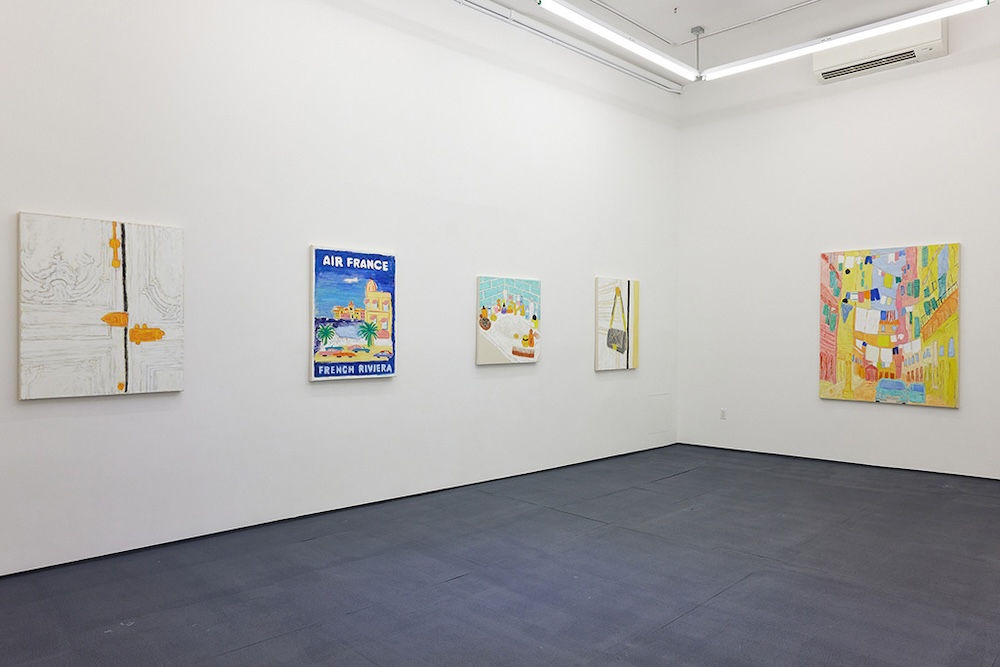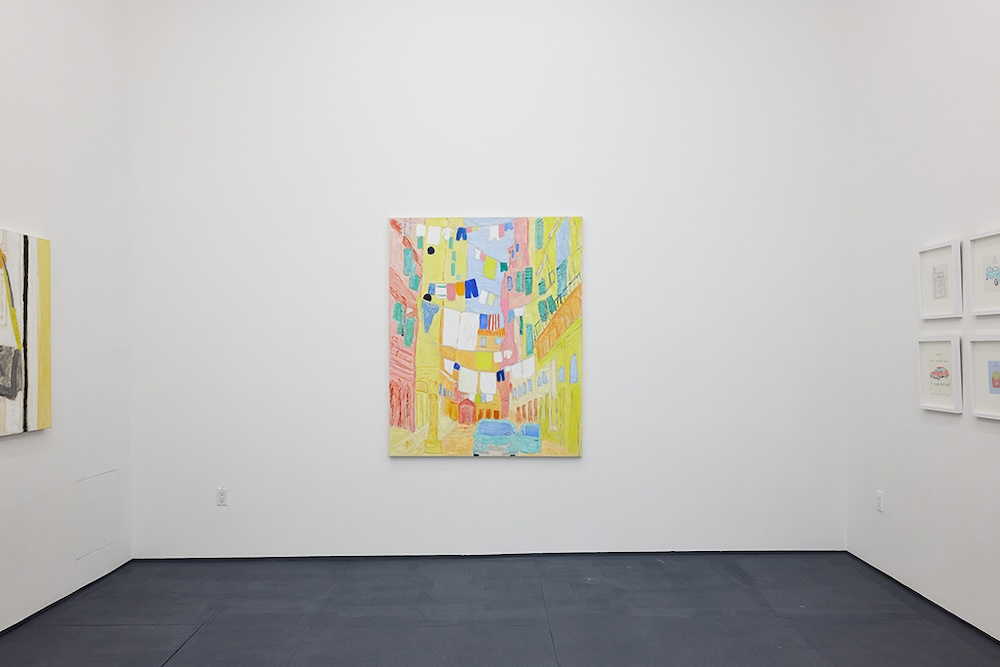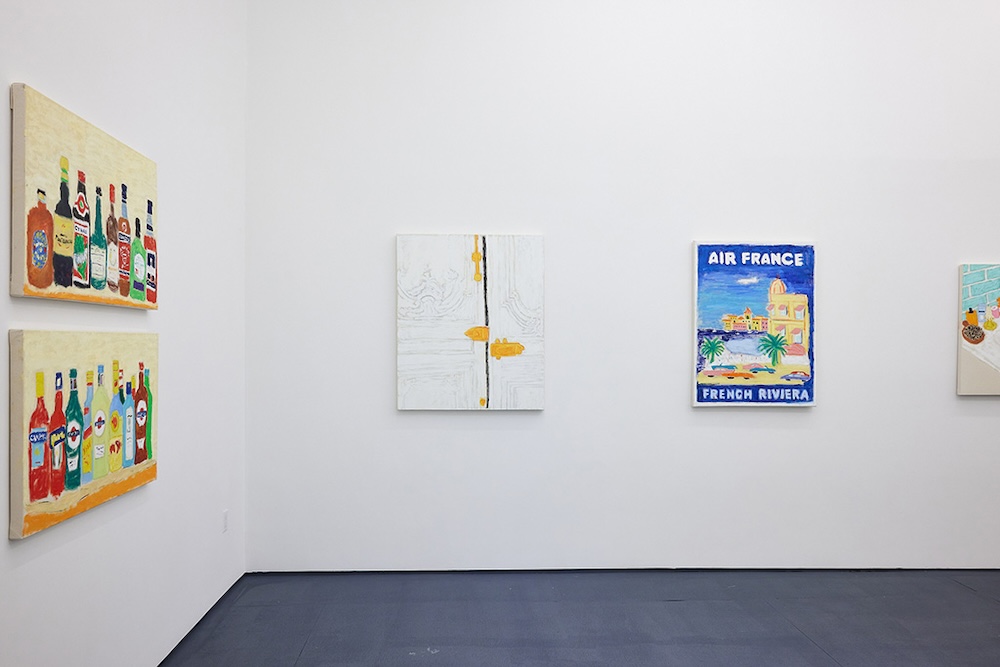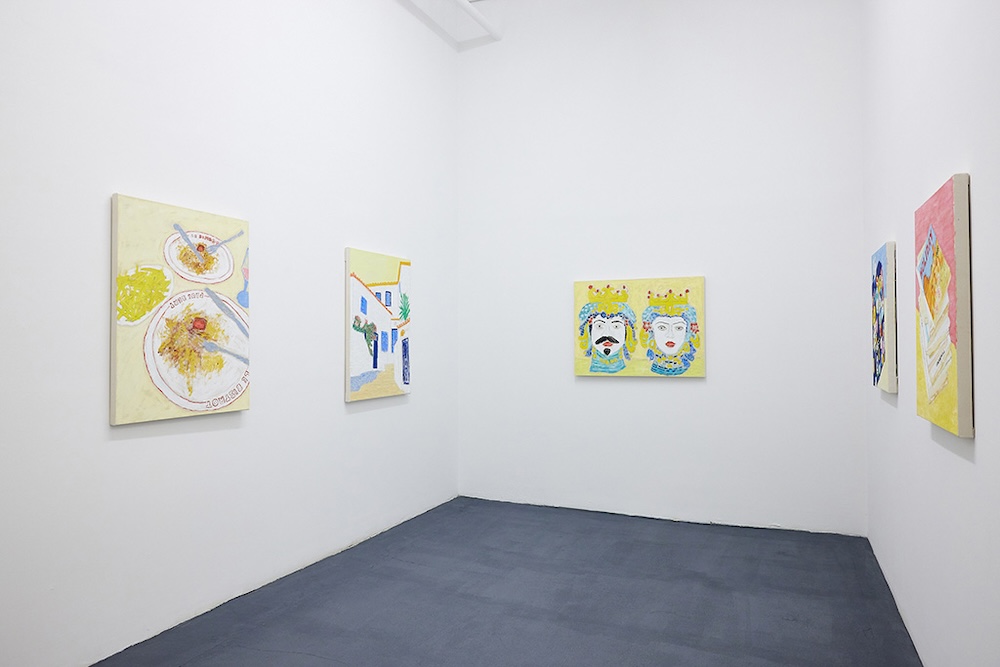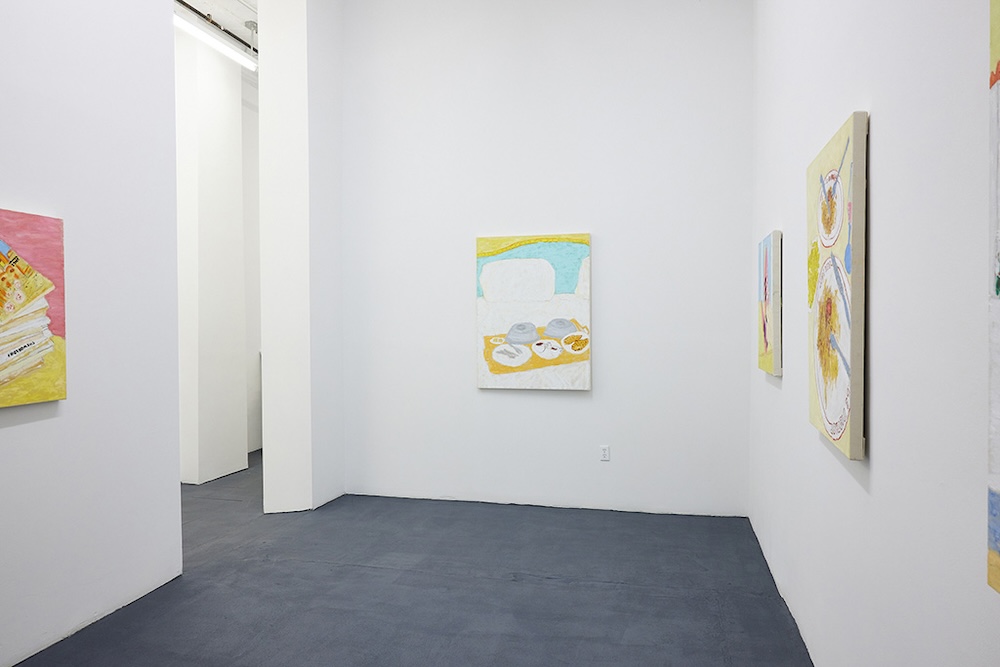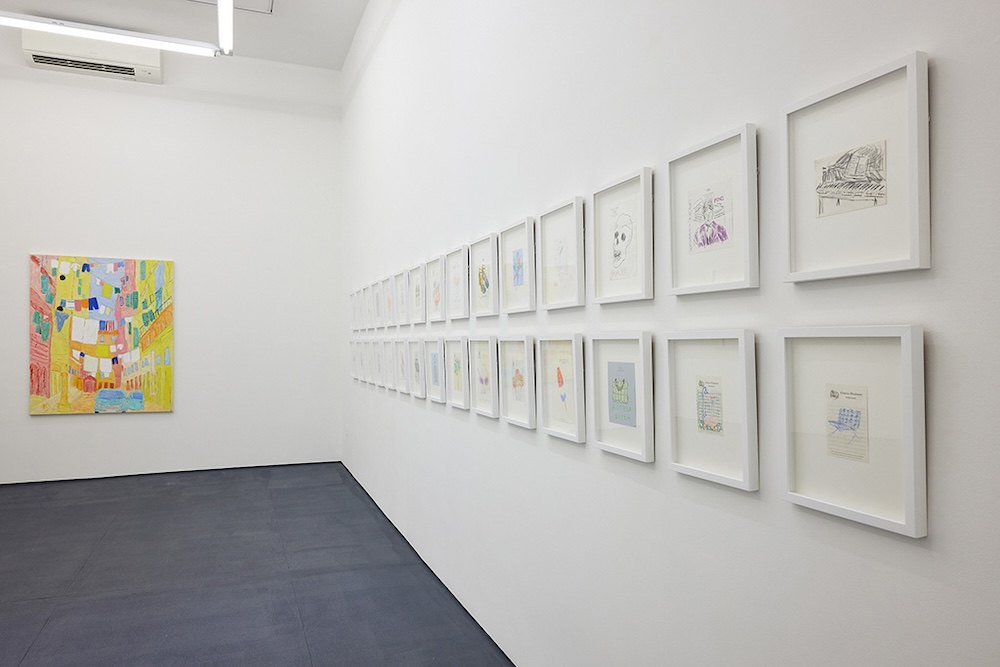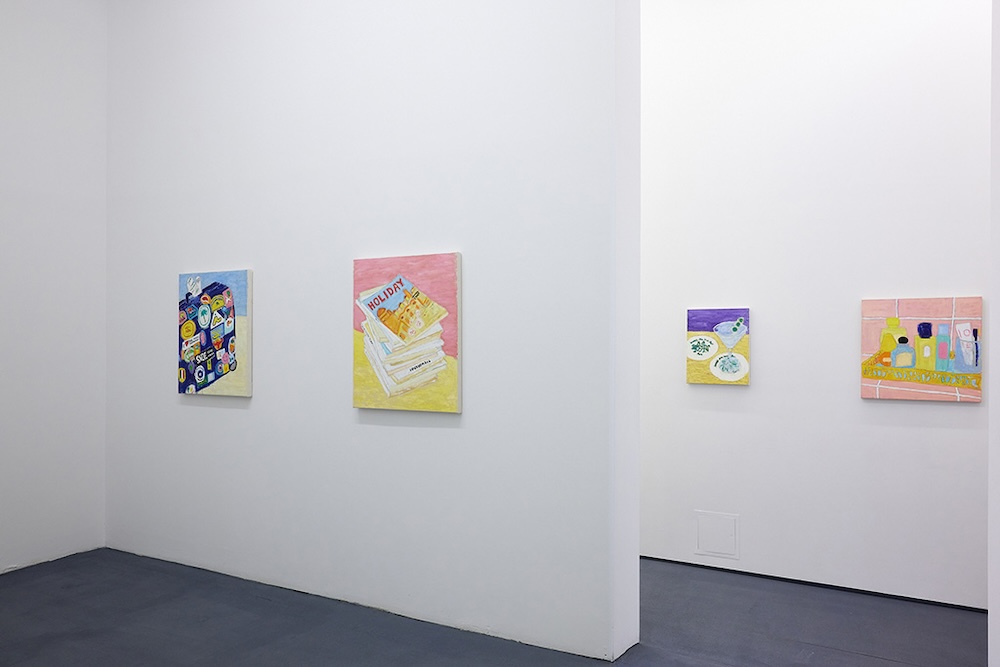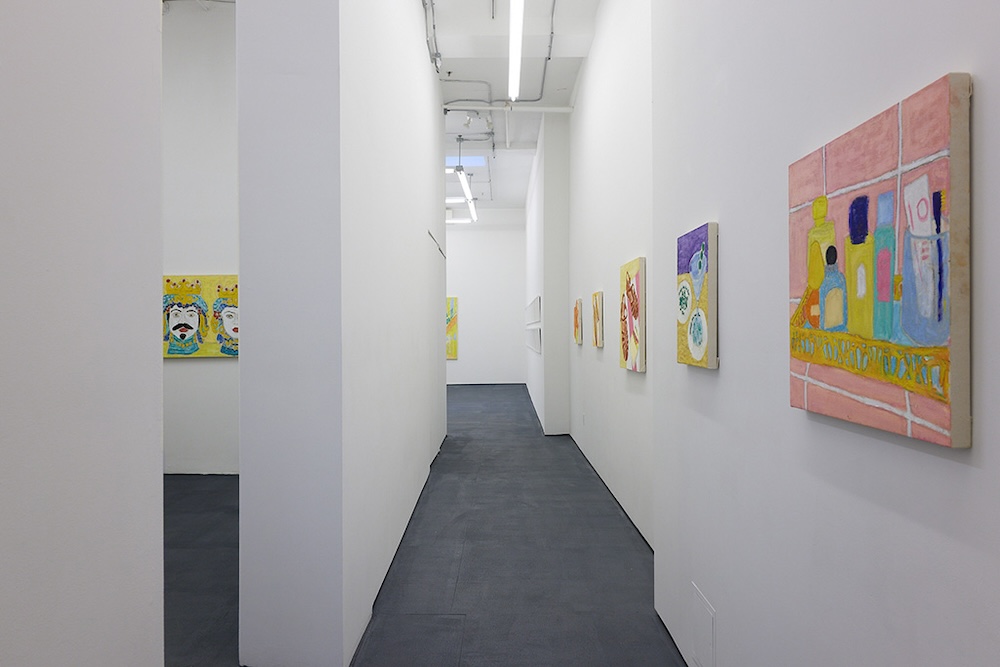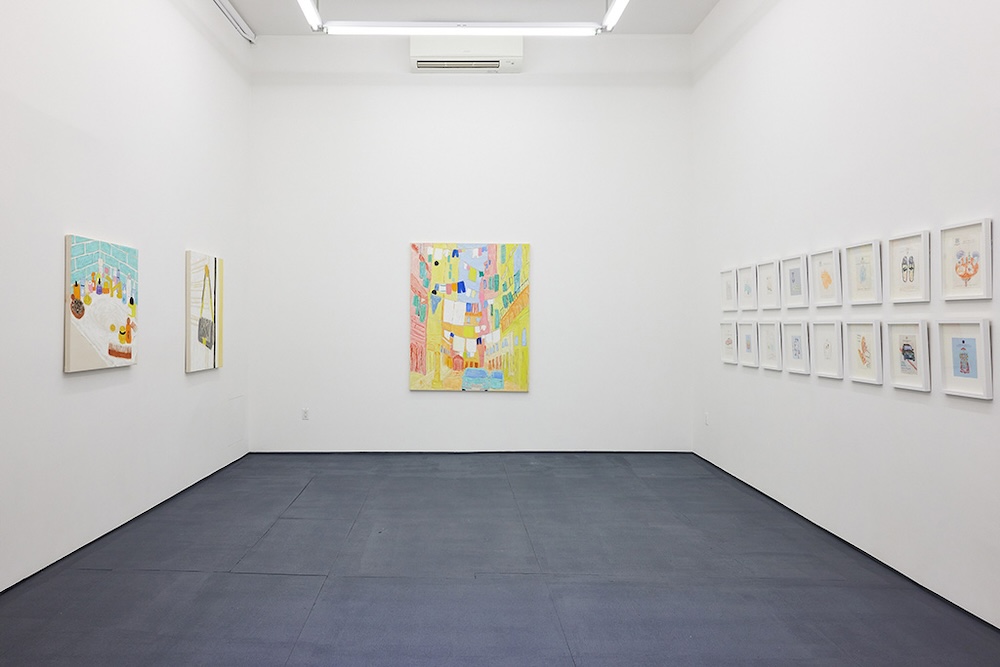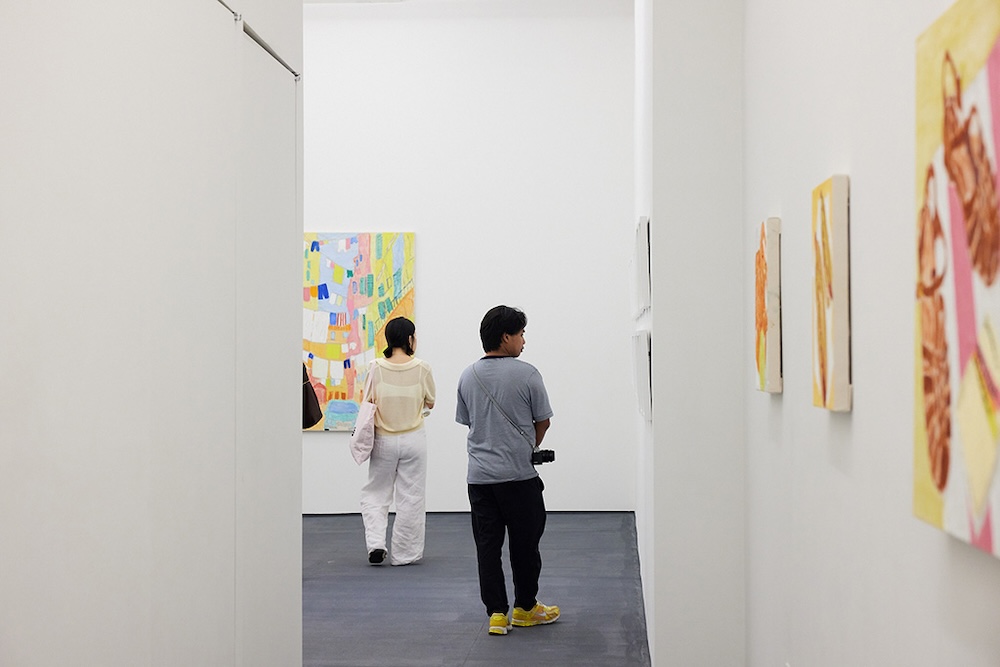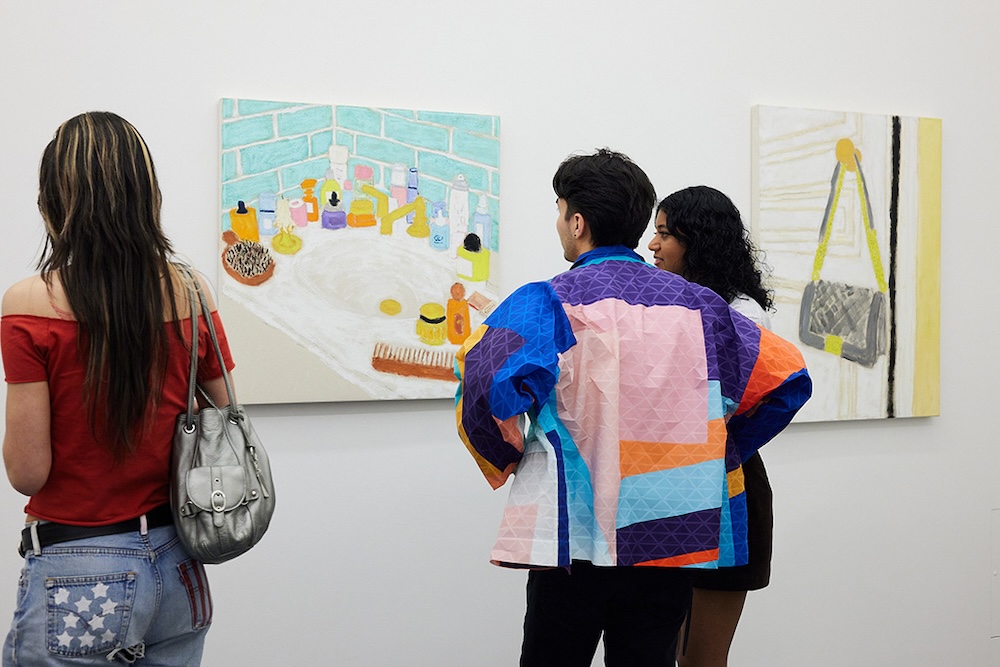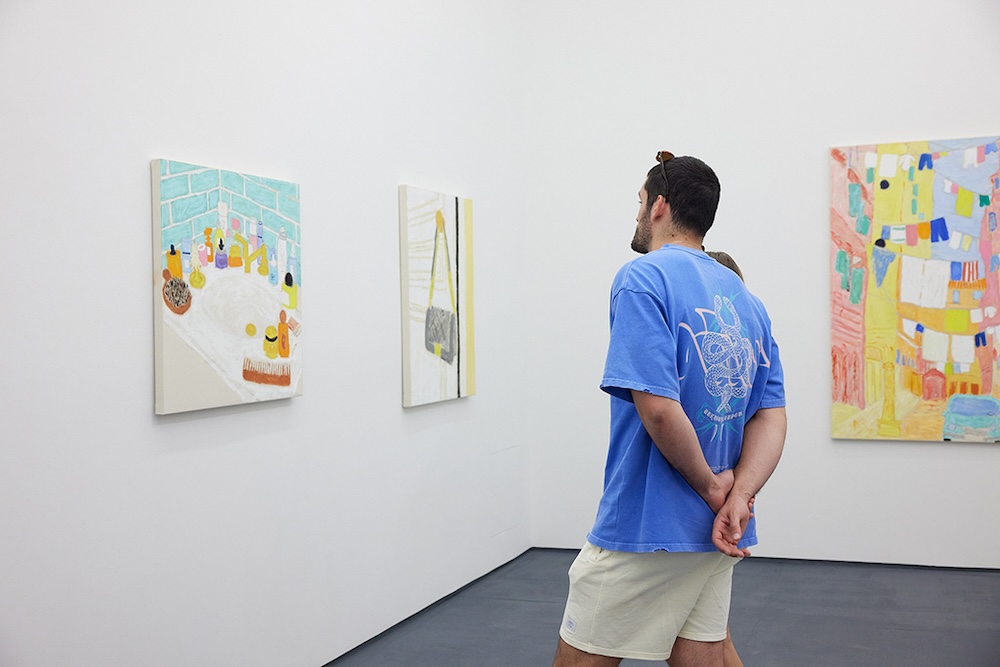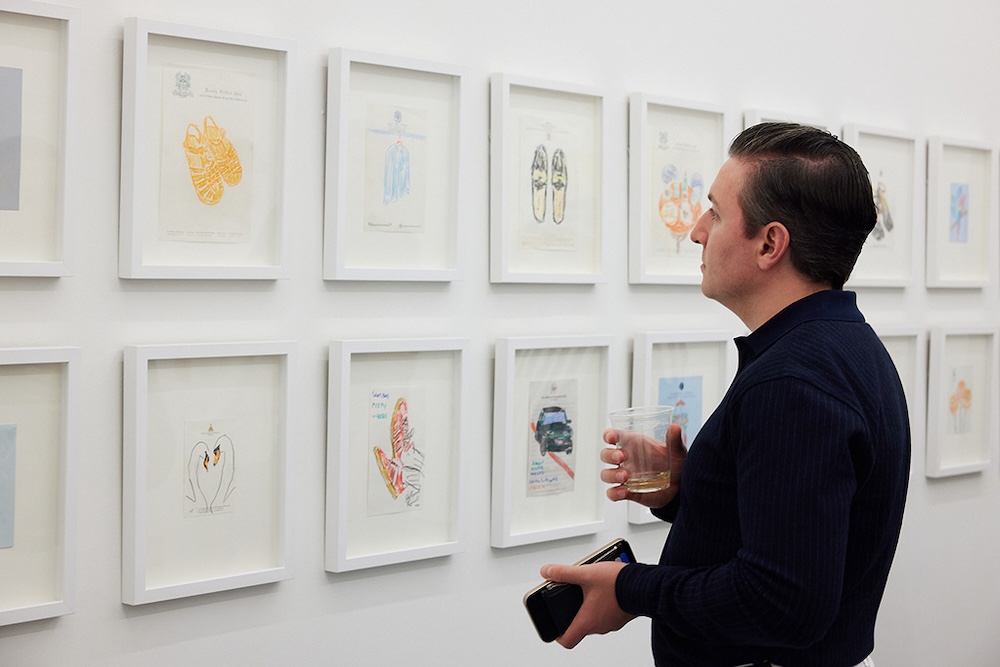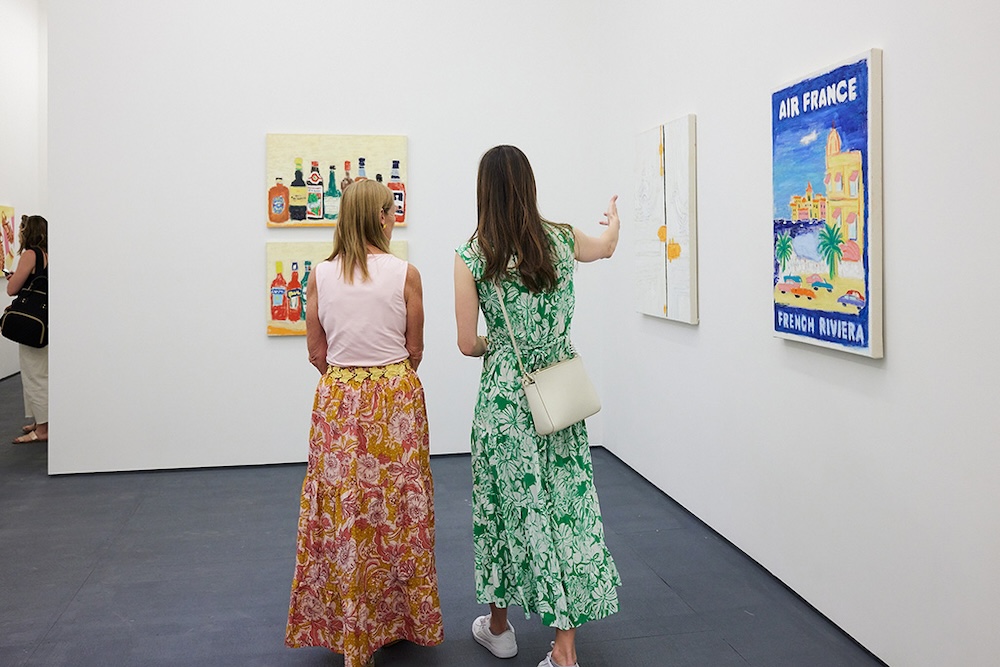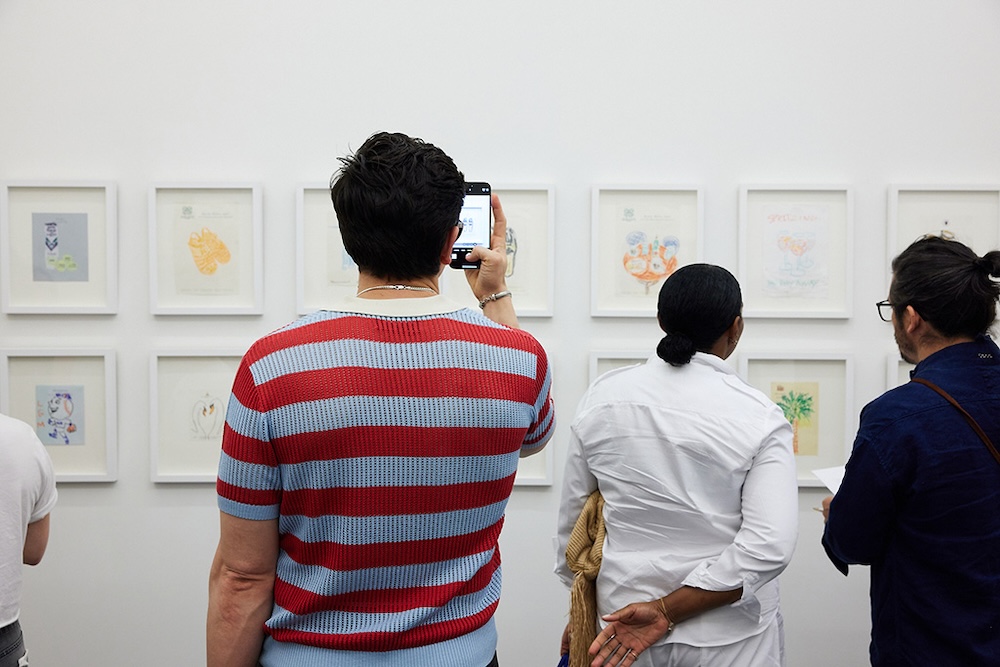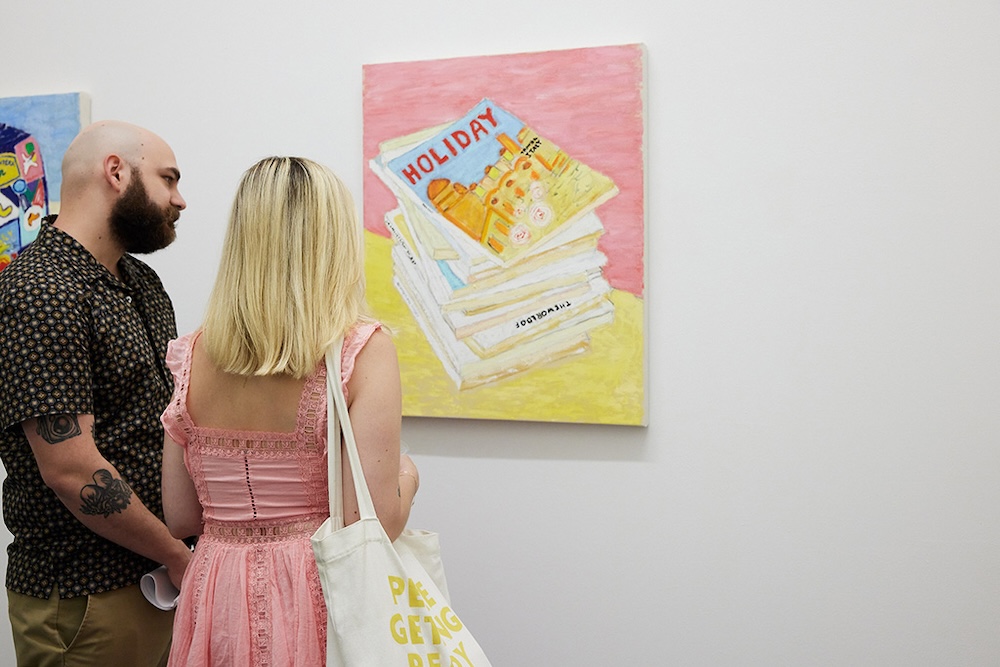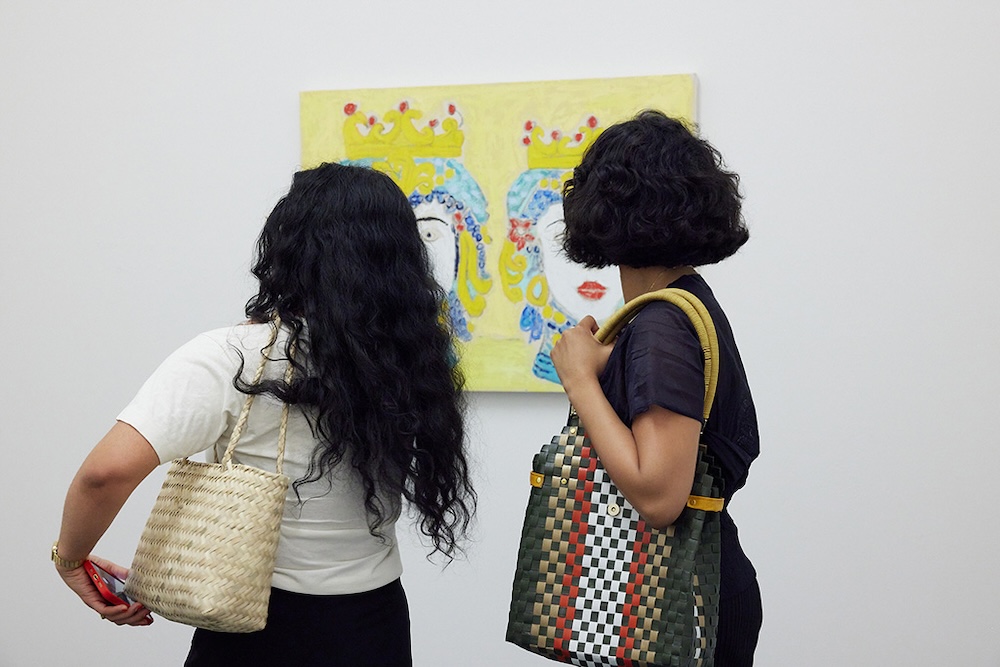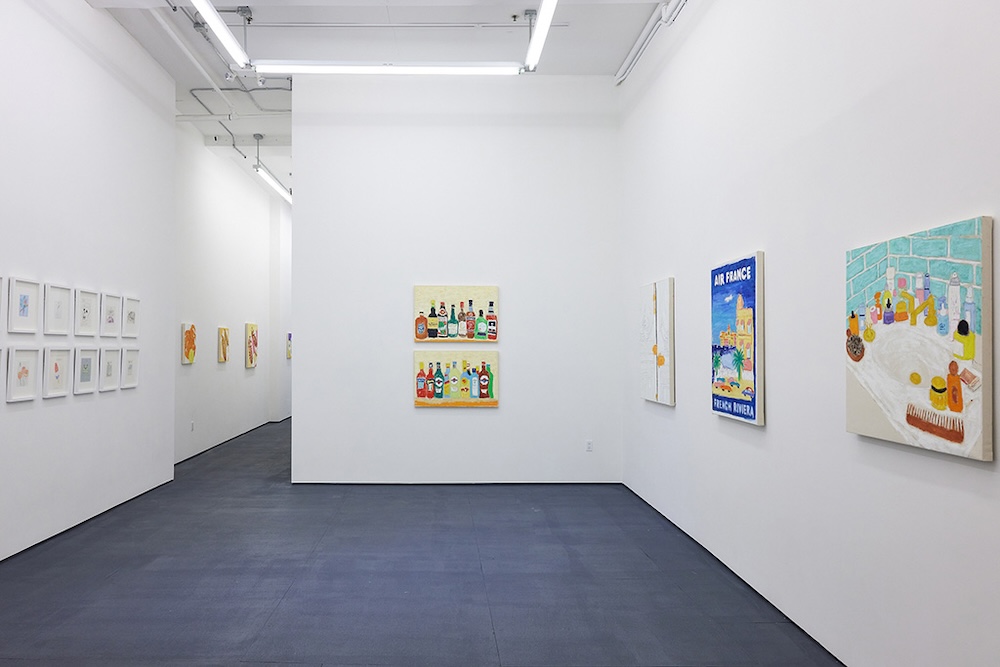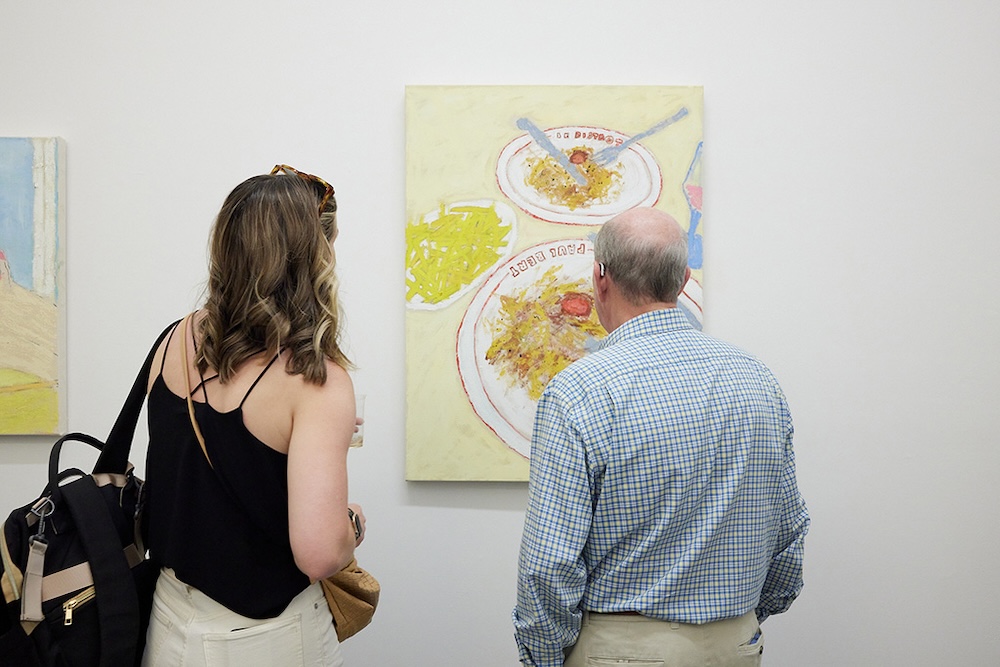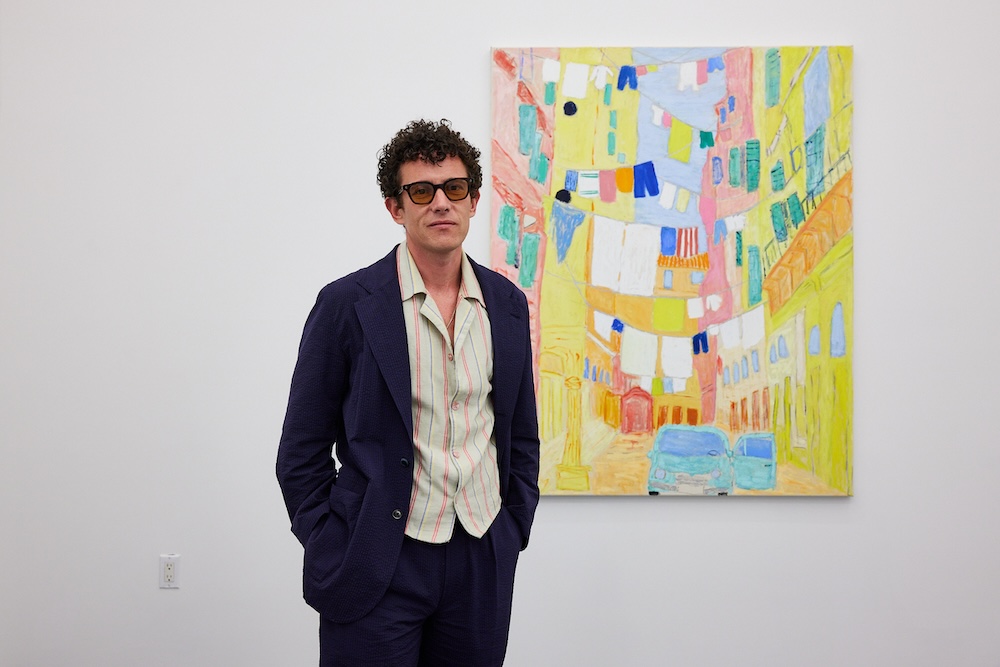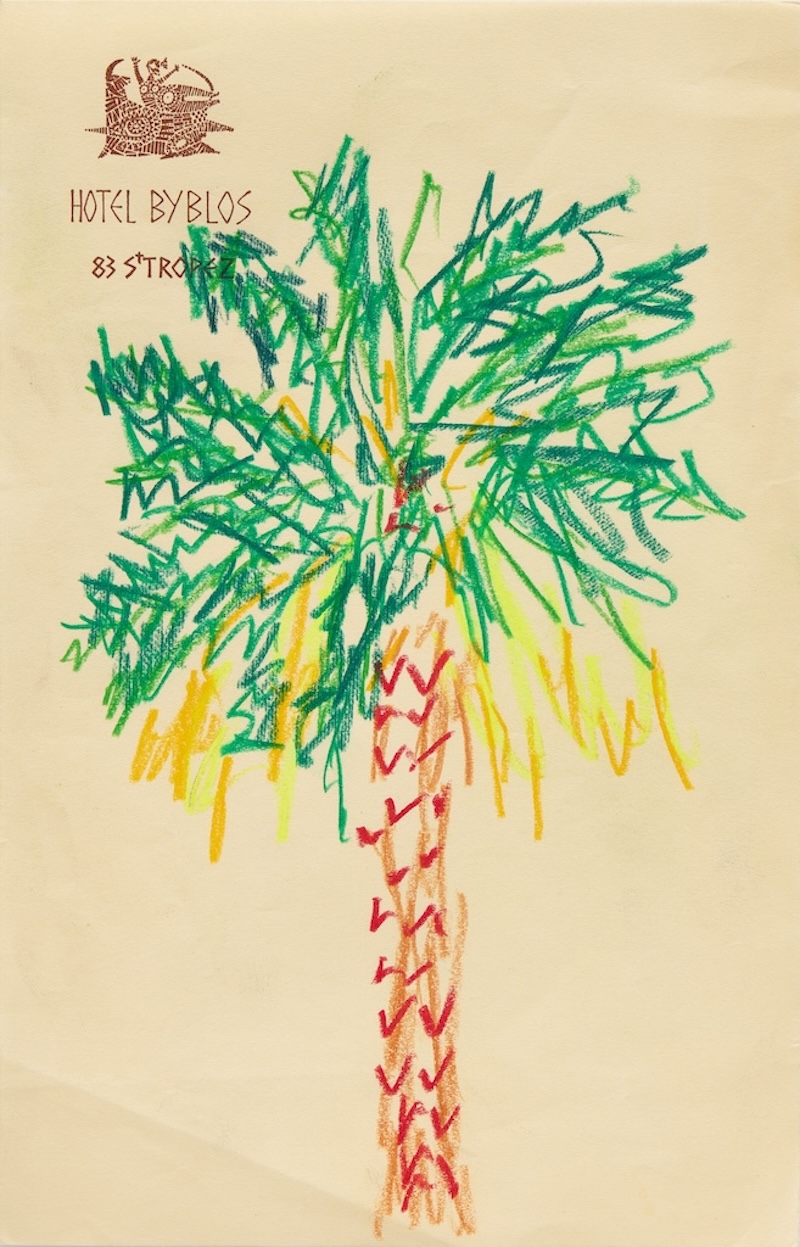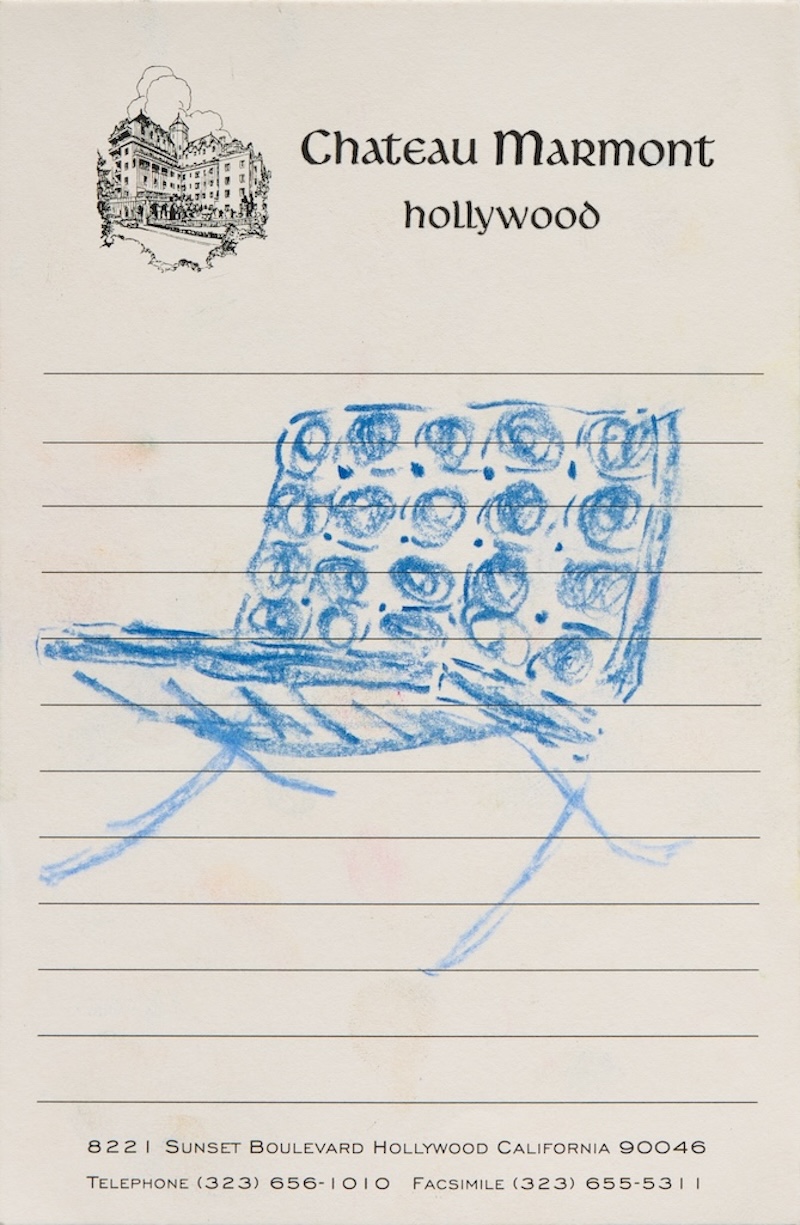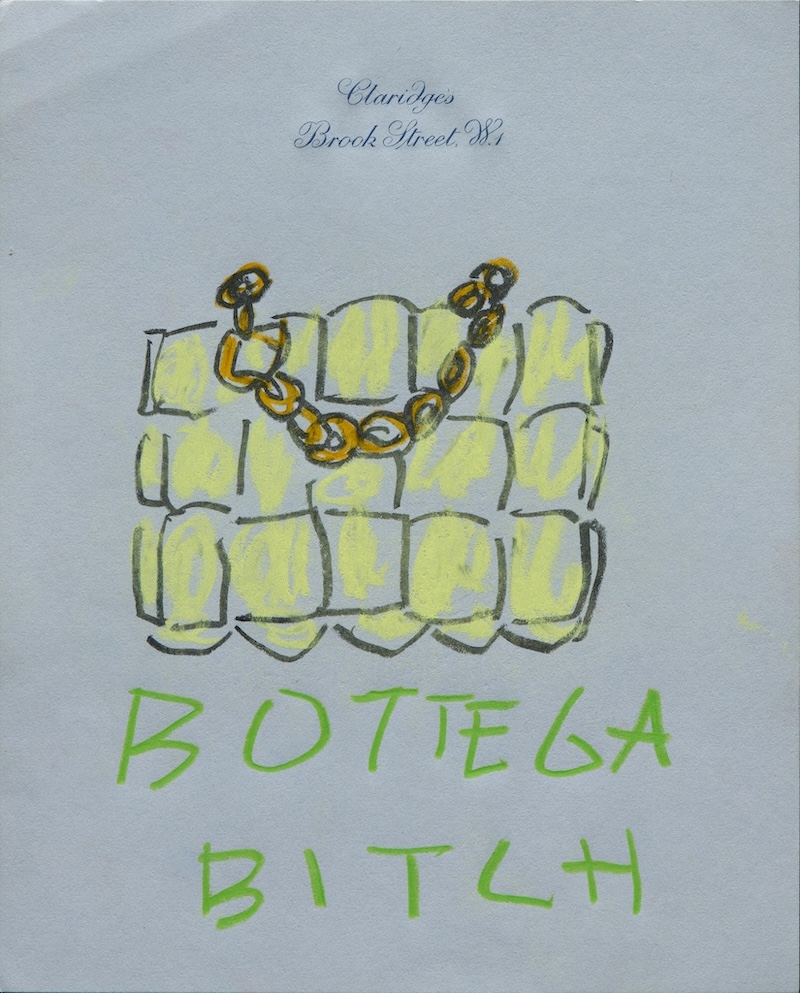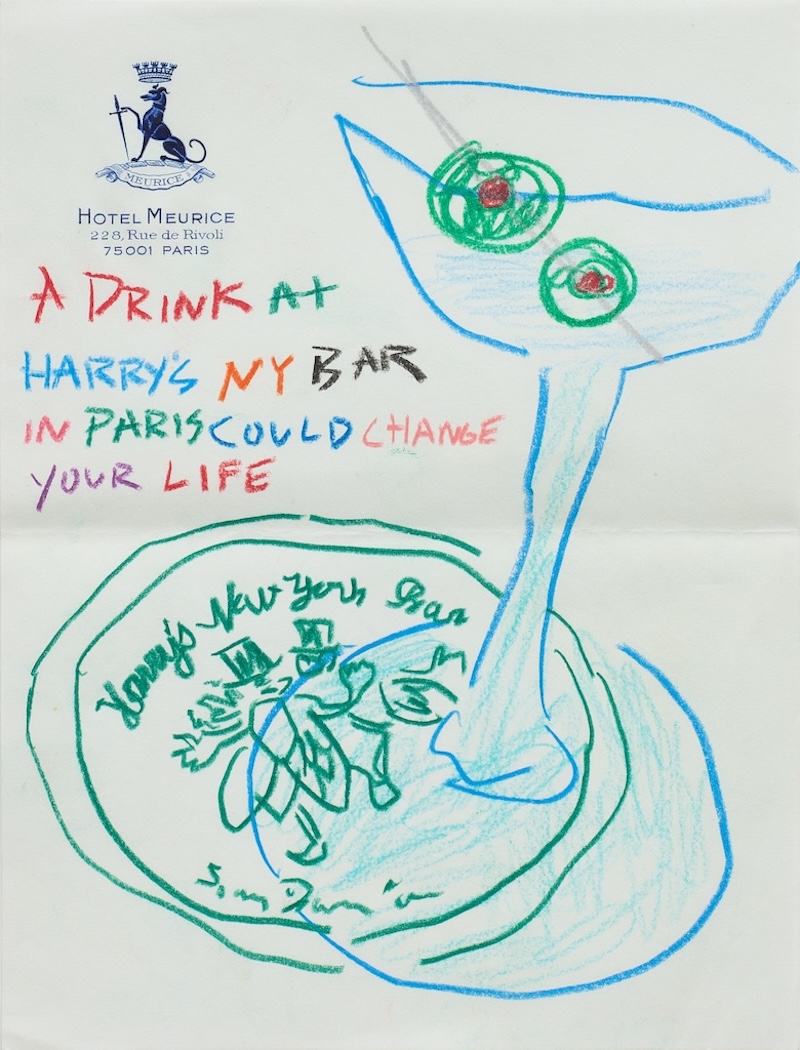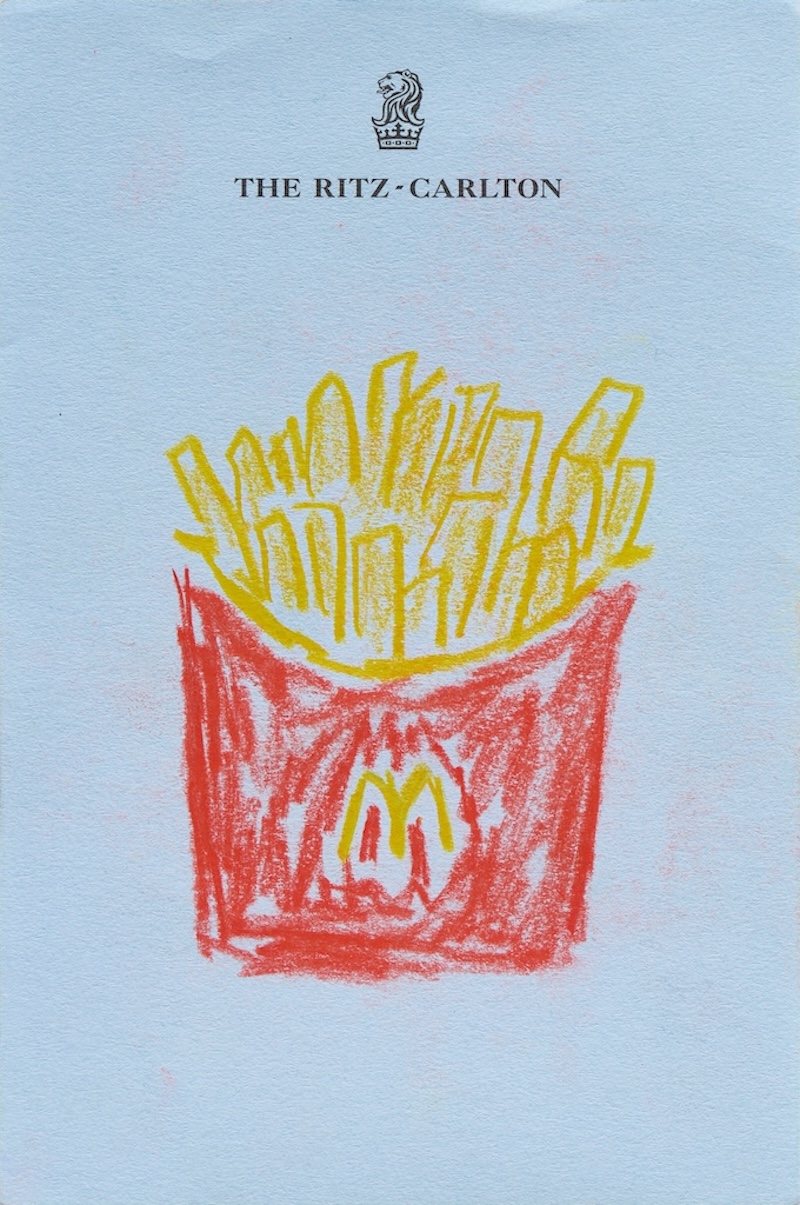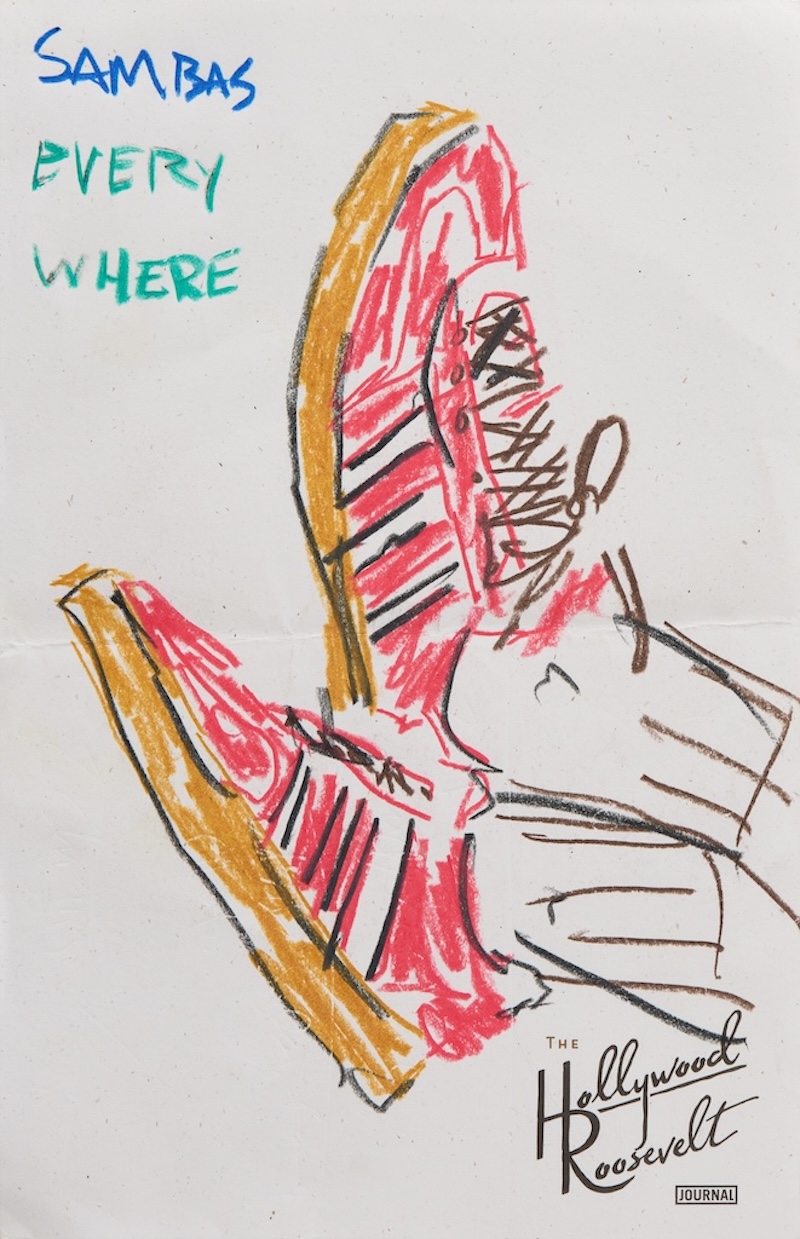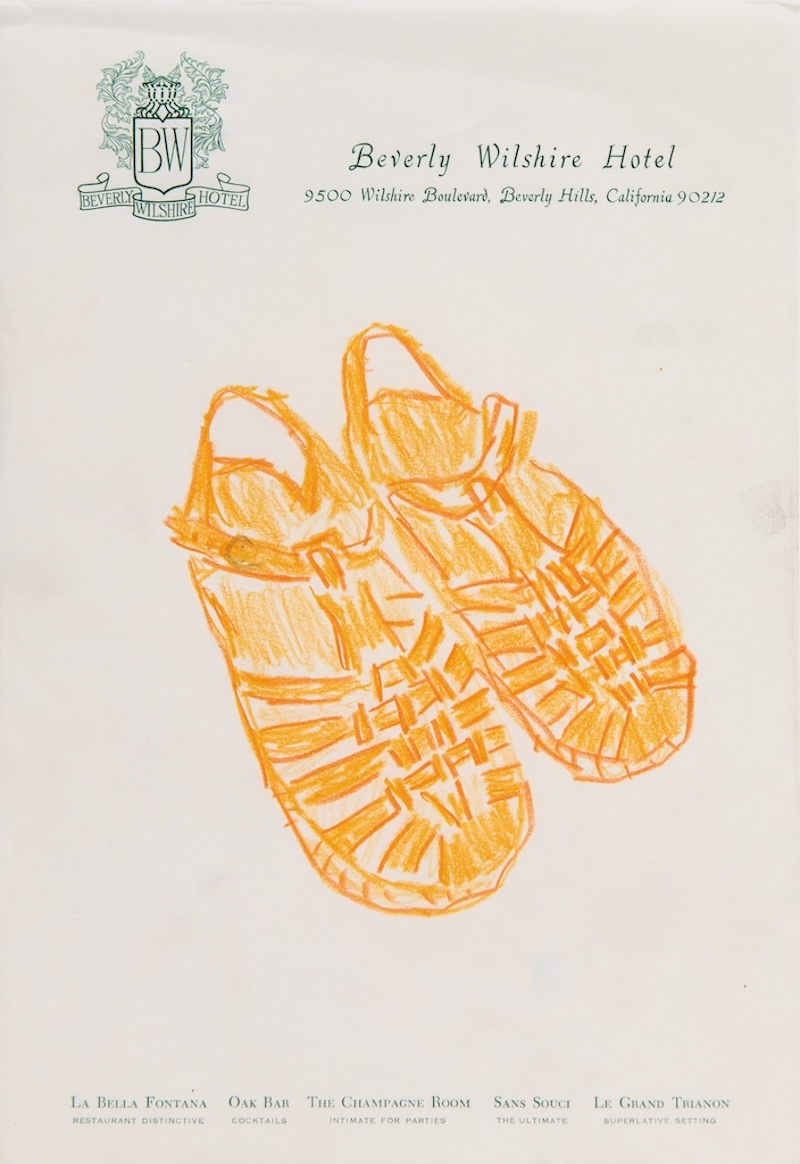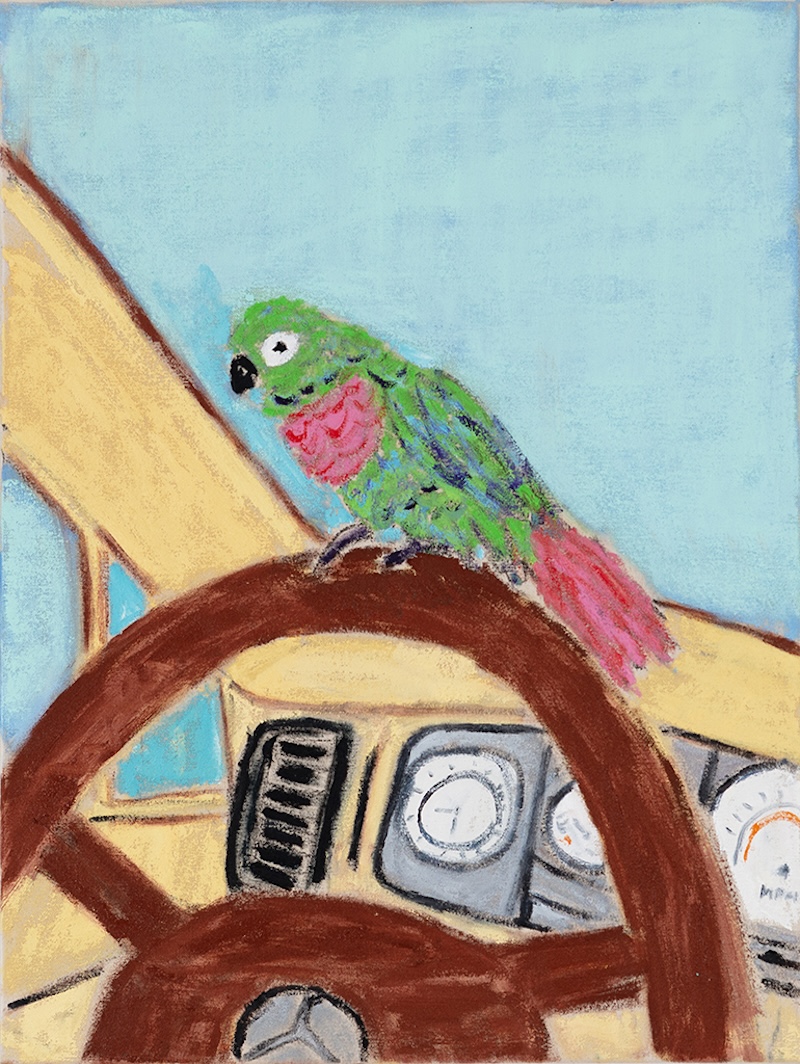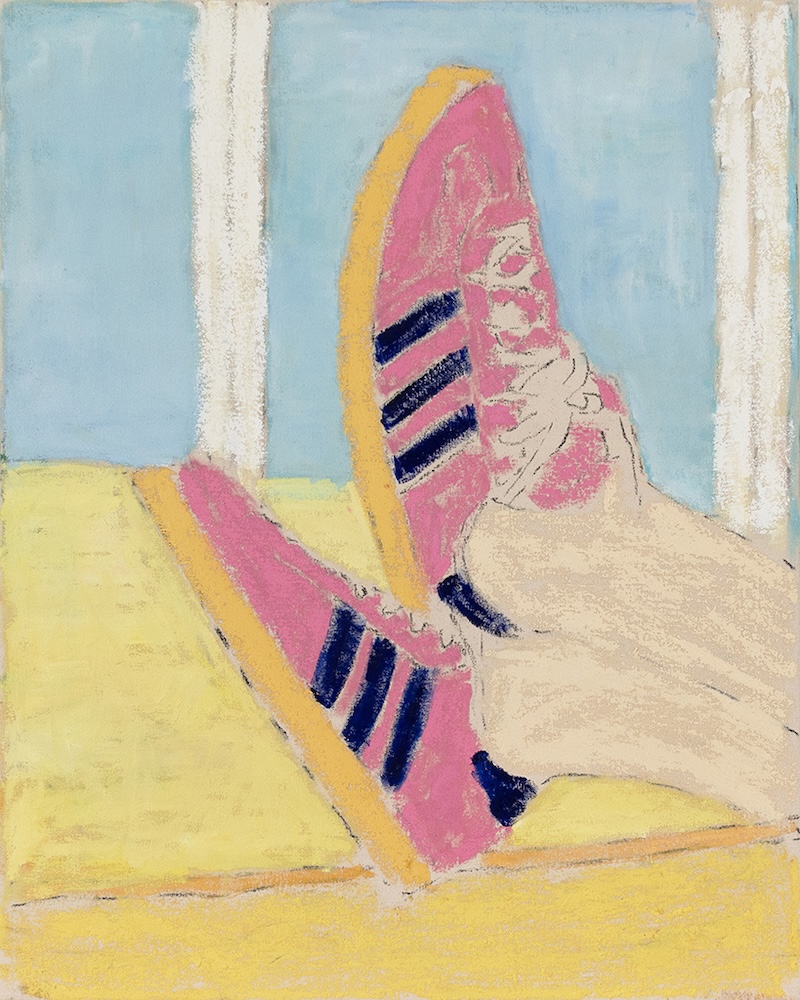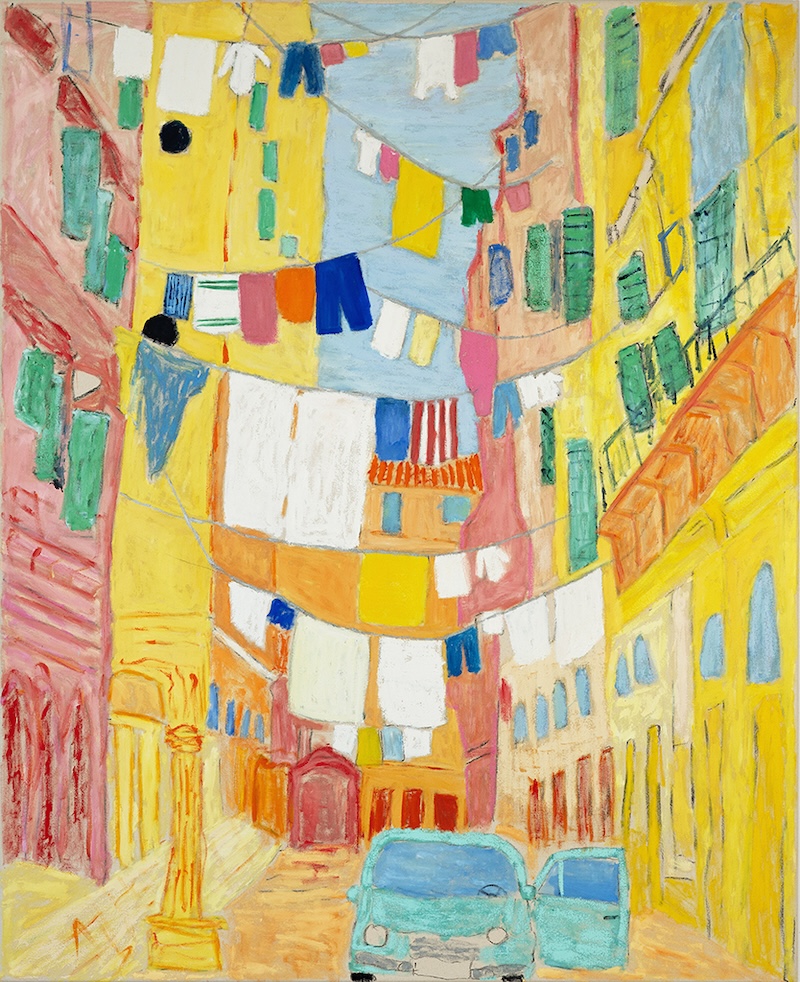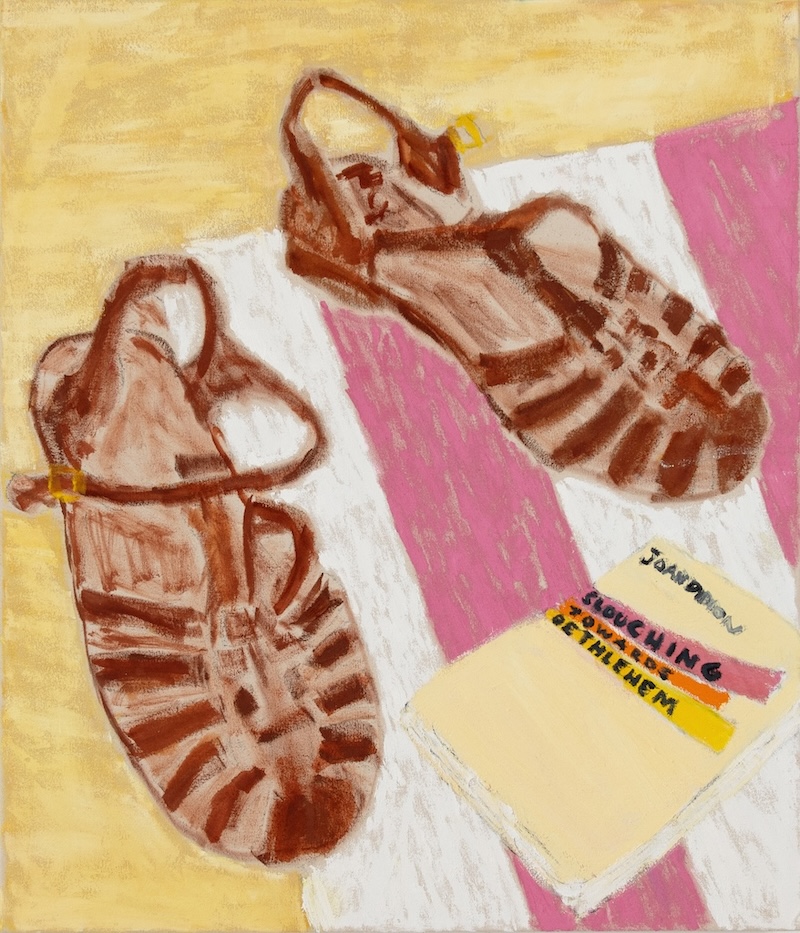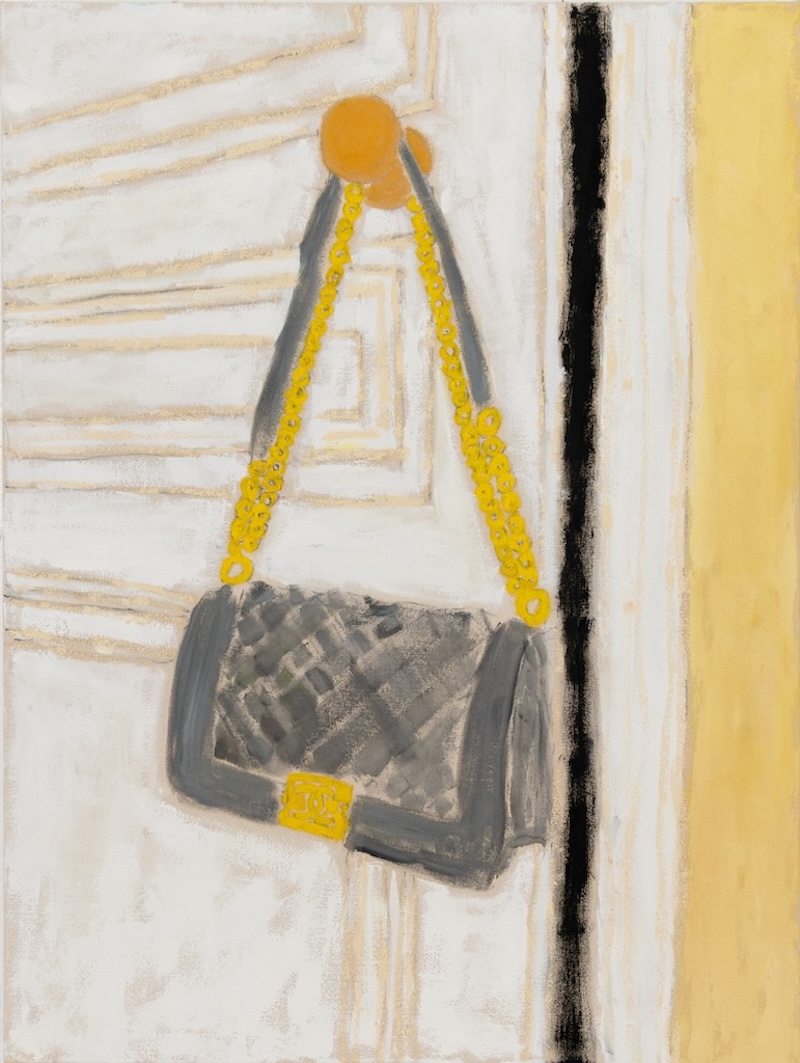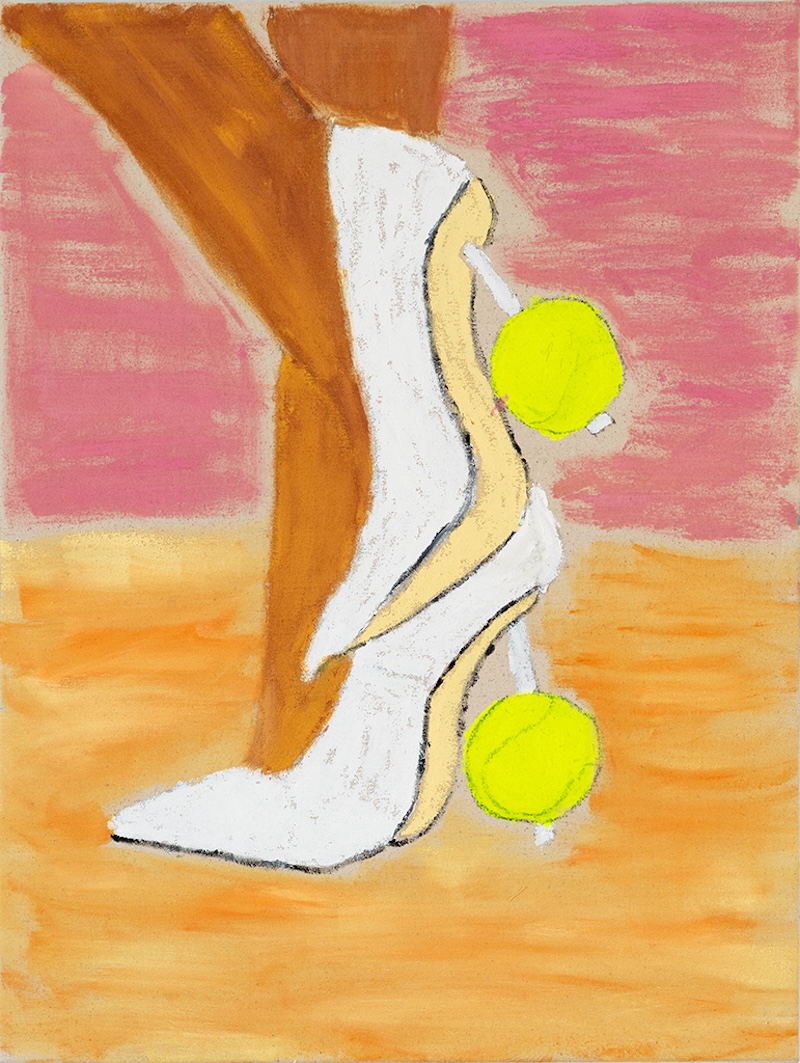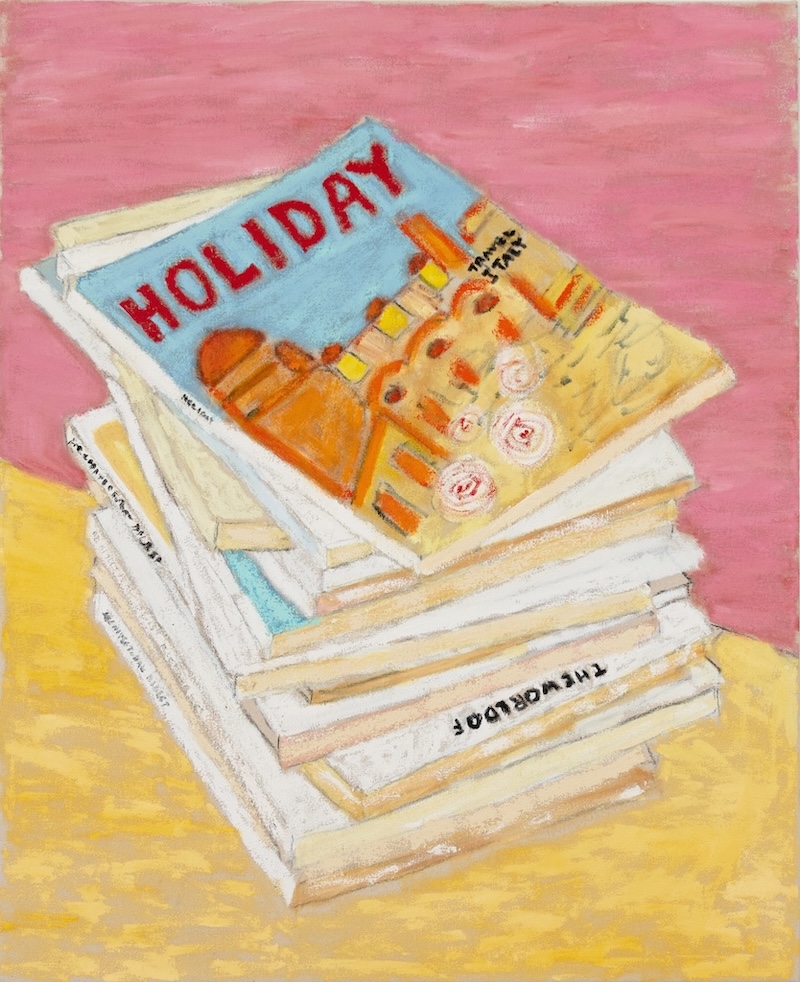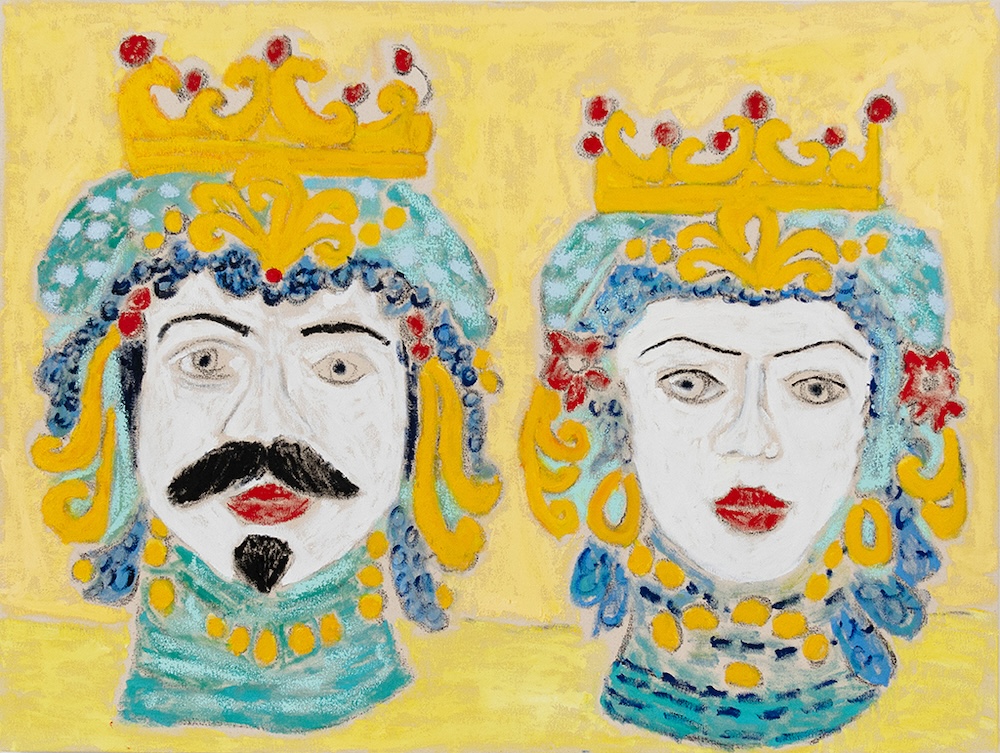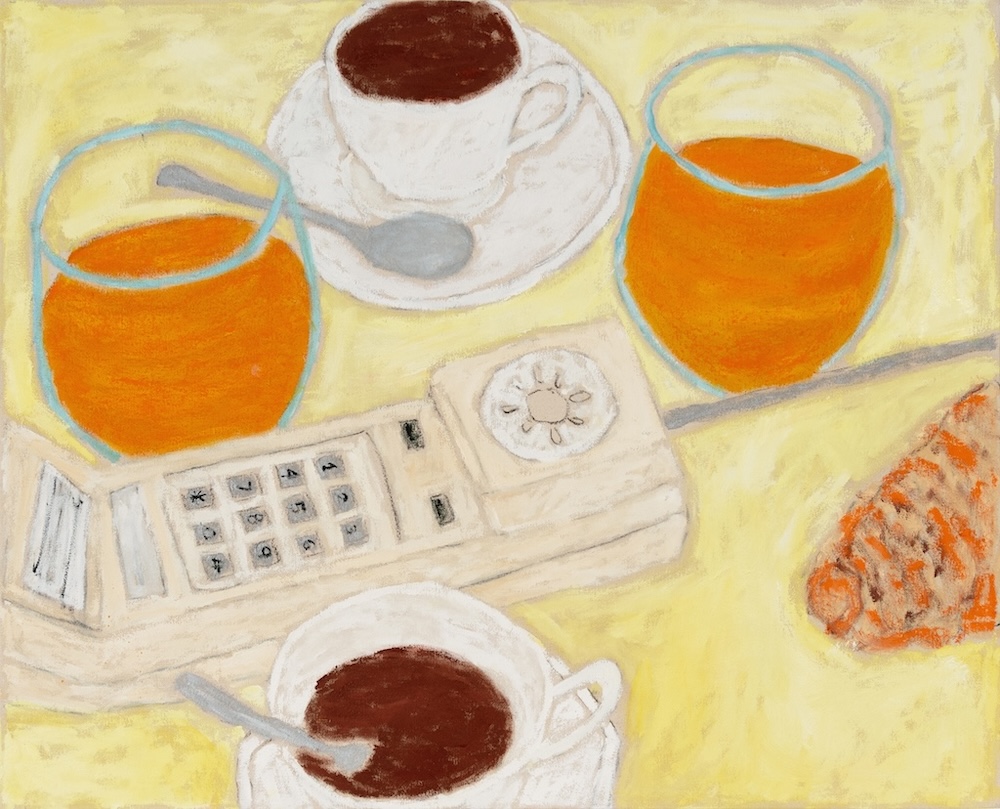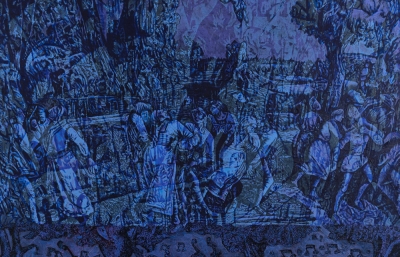The idea and practice of getting away, going on vacation, emerged simultaneously with the expansion of railways across Europe and the United States in the 19th century; the American middle-class family vacation didn’t become popular until the 1950s. And yet, there is this idea that the impulse and practice of “getting away from it all” has always been there. The images that come back from friends and family who ventured to other lands feature classic tourist spots—the Eiffel Tower, the Grand Canyon, the Pyramids of Giza, the Tower of Pisa—but they also feature everyday objects—a cup of coffee, a pigeon, bottles on the side of the road—that seem to glow anew in a foreign light.
In his latest solo exhibition at Hashimoto Contemporary New York, Voyage Voyage, artist Michael McGregor considers the fantasy surrounding travel and how it lifts scenes of life from commonplace to romantic, making certain objects, experiences, views, seem as though they’ve always been with us, been part of our culture. Before his solo exhibition opened, the LA-based artist sat down with the gallery’s Katherine Hamilton to discuss commercial tourism, artistic influence, an object’s cultural life, and music.
Katherine Hamilton: For this series of work, you were focusing on the aesthetics of travel, the “art of commercial tourism,” and new waves of “lifestyle photography.” There seems to be a nostalgia that unites these ideas, or at least an anticipation that a moment that hasn’t happened yet—a moment being marketed to you—will become a memory to look back on.
Michael McGregor: I've been attracted to tourism posters, travel magazines, stamps, postcards, and all that since I was a kid. My mom used to get Harpers Bazaar and Vanity Fair; my aunt would drop Town & Country and Architectural Digest at our house when she would come to dine. Twelve copies of Town & Country, which always seemed strange to me, but I liked the photos. There are a lot of clichés associated with the images themselves, but their aim is to entice, and they succeed in that. The paintings in Voyage Voyage focus on images that entice and allure, often toying with imagery created to do that commercially or were created to promote something. I want to remove that context and refocus the image on the allure of the image and the objects and let the viewer create their own narrative.
People have asserted this child-like wonder onto your work and how it depicts the world. Because of your loose, fast gestures and vibrant palette, your work draws parallels to the look of the Fauvists or the spirit of Impressionism. You named Raoul Dufy and David Hockney as artists you love. Because your works are so attached to your perspective on the world, what moments make you think of painters who came before you?
Those painters inspire me by how they translate their observations and their perspective of the world onto canvas or paper. I wouldn't say they influence as much as excite and inspire. I love seeing what artists choose to leave in, or out, of their works—the underpaintings and color choices that were abandoned but create interesting layers. When I go out and see shows, that's what attracts and excites me. This happens a lot with [painter André] Derain. The way he used color and the raw elements of canvas excites me. I just saw some works recently in the Pompidou permanent collection and they felt so modern, so fresh and raw, lively, colorful...
What about the naïvety in your work—you didn’t go to art school, you have this fresh love of the world, and yet you must be cynical about certain things?
The filmmaker Aki Kaurismaki said, “I think the more pessimistic I feel about life, the more optimistic the films should be.” I feel the same way about my work. I want people, and myself, to retain a sense of wonder for the world, for nature, and birds, and just walking under the sun—for humanity, despite everything.
Many of the subjects in your works are very now: the Tabi heels or white tennis shoes, for example, point to contemporary “cool” aesthetics. Do you frame yourself as wanting to capture a current “era”?
I'm more interested in exploring the murky place between past and present than being a “chronicler of my age.” I would hope someone would see my work and not be entirely sure when the work occurs. They are based on memory, an impression, or a perceived idea of a place, rather than specifics—even when they are specific.
Often when I think about time, place, objects, and memory, I think about Daft Punk. “One More Time” has all the elements of classic disco, and yet, when it arrived, it was wholly its own thing. When it came out in 1997, it was so familiar; it felt like it had always been there within the universe's collective subconscious. An irreverent loving homage to its influences that could somehow place it in the 70s disco, 80s house, 90s techno, and the approaching millennium.
I also remember hearing Daft Punk talk about wanting Random Access Memories to “exist before the internet.” That's something I aim for in my work—for them to exist offline, to transport people to a place before 24/7 interconnected iPhone life.
That makes sense. I also wonder about this seeming interest in nowness and those aesthetics of commercial travel: the timelessness, so to speak, of traveling, of getting away. Do you see those themes at odds? Or maybe the nowness of new types of lifestyle photography you mentioned pulls it all together.
Certain things—let's say Sambas or the Loewe tennis ball shoes—are classic objects. SAMBAS and Stan Smith tennis shoes have been constants in my life since I was a kid. To me, they are iconic, rare objects identifiable across the globe simply and say lots of things about the person wearing them. There's a lot of context in a shoe like those classic Adidas.
The second I saw the Loewe tennis heels [on Zendaya], they entered that pantheon of iconic objects for me. It reminded me of how I felt when Bjork wore the swan dress to the Oscars [in 2001]. So simple and chic—and irreverent—but timeless and elegant. Instantly memorable and recognizable, as if it had always been there. Tabis I would also consider a classic design style—like a Mies van de Rohe chair or a Ferrari.
What about the discourse around your work? There’s a celebrity mystique—the traveling, the immediacy, the opulence. Do you feel like LA has rubbed off on you and your work?
I love Los Angeles. It's such a contradiction of a metropolitan epicenter. It’s not a city. There’s nothing traditionally cosmopolitan about LA (in a classic New York, London, Paris sense), but... It’s Hollywood. It’s a city whose role is to produce alluring and enticing entertainment. It’s shrouded in the business of the production of desire, glamor, and entertainment while also being under the burning gaze of the sun. The palms... Sometimes it can feel like LA is a city permanently on vacation, which for me, makes it a great place to work.
But I love walking. It’s kind of essential to the research/observational part of my work. So... I try to spend as much time as possible being in places where I can walk around all day. Generally just observing, usually having no plan. Maybe a coffee with someone or an exhibit, but usually just walking. Noticing things. Making notes. Making drawings, continuing on my way. That’s hard to do in LA, and it's one of the reasons I've been spending so much time in Europe.
It’s interesting that there’s this connection to the place that you live, but to make work you also have to go somewhere else. Do you feel like your work has a different personality from your self? What do you share in common?
Hmmm... I’d say yes and no. The work is coming from a place inside me, from my lived experiences and observations. Music has a lot to do with that. It’s all intertwined. “The soundtrack of our lives” as they say!
Right, you were a DJ in a previous life. Has the role of music in your life changed since you moved away from a professional relationship with it?
Music is my first love. I released a lot of music. I had a tape label, a radio show, ran a blog, threw shows, had a magazine, DJ’d, etc. But I like being a listener, dancer, fan more than anything. Two songs that I’ve been listening to a lot about the beauty of music: Sean Nicholas Savage’s “Music” and Daft Punk’s “Give Life Back to Music.” Those songs pretty much sum up how I feel about music.
I listened to your 2022 Drakes’s Spotify playlist. I have to say, I was so surprised by how smooth it was—lots of soul, funk, silky sonics.
My listening habits are pretty varied—in the South of France last April, I found myself exclusively listening to Hank Williams and Lucinda Williams. Something about the ache of country music sounded so good on the train to Nice. Music, and objects, tend to take on new perspectives when experienced outside their homelands. Trad Americana sounded incredible to me in Antibes and Nice, going to the Picasso and Matisse museums, on the train, walking the seaside, fruits de mer, Sancere, pastis, and... country music. A month later, in Siracusa, Sicily, I was obsessing over Paul Simon and Frank Sinatra—maybe because the house I was staying in with my friend Hyuna had cassettes of their music]. It also had Mina and Franco Batiato, and there was this amazing disco party on Sunday afternoons in the fish market. The great DJs would play Brazilian stuff—Jorge Ben's “Solitario Surfista,” loungey disco like Franco Micalizzi’s “What’s Going on in Brazil.” To that soundtrack, there was an amazing disco train conga line in the middle of the fish market, in the rain. So, a lot of those songs are etched in my memory. A lot of drawings in Room Service were made during this time—the Hank Williams one, Heart of Gold, the Walkman, boombox, Campari, Chanel bag on the door, Prince controversy, etc. The feeling of that period framed in the music that appears in those drawings crept into a lot of the paintings.
What about now? You mentioned that the show title is lifted from the name of this 2001 French Disco track by Desireless, ubiquitous on European beach discos.
Lately, back in LA, I've been listening to lots of old French touch—Éttiene de Crécy, Alan Braxe, DJ Falcon, and Daft Punk of course. Lots of Roxy Music too, mostly Country Life and “Virginia Plain,” as well as The Waterboys's “The Whole of the Moon,” and Kirin J. Callinan’s cover of it. When I’m in the car, I listen to K-Surf, which is all Supremes, early Beatles, Jim Croce, Stevie Wonder, The Four Tops. A lot of the titles of the paintings come from songs that hold a special place in my heart and mind, from places, periods of my life, and times with friends or strangers. The mixtape for the show reveals a lot of the sonic source material that went into Voyage Voyage.
The list of influences you sent me from this show wasn’t only musical. Reading them in a list felt like reading a poem that makes cryptic links between Steely Dan, Fauvism, and Eric Rohmer's film Conte d'été, for example.
There’s a bit of sly pastiche in all these influences. I see them all as different perspectives and observations on bourgeois culture in one way. Often derided as all style no substance, or decorative/muzak, or a film where aesthetics triumph over narrative... these features have always attracted me, even though I don't believe Steely Dan or Matisse are all style no substance.
This show opens on the heels of the release of Room Service, a publication of “point and shoot” drawings on hotel stationery from the past few years of travel. These are quick, rendering objects representative of a moment. Do you often work quickly?
As fast as possible. It’s a feeling, it’s intuitive. Just following intuition and moving on when intuition says move on. I'm embracing a fleeting feeling, like taking a photo.
Voyage Voyage is on view at Hashimoto Contemporary NYC through June 22nd. Installation and opening night photos by Heather Quercio.

